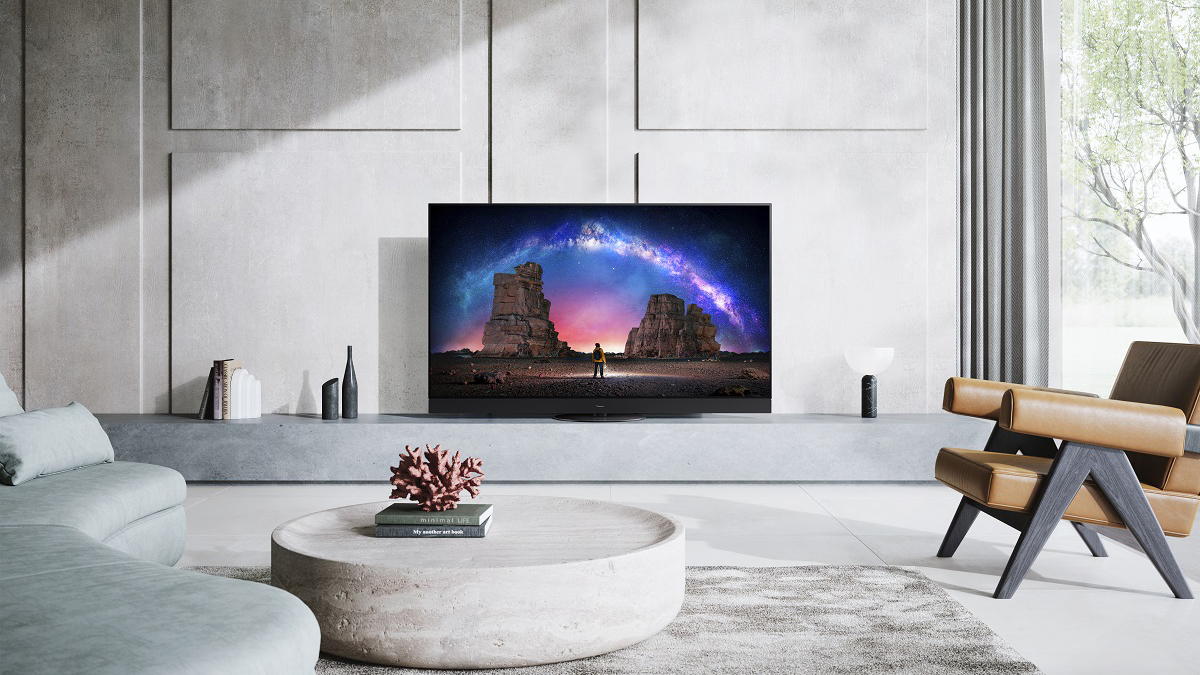This 4K OLED display was printed by an inkjet – watch it in action
Inkjet OLED TVs are coming

Inkjet-printed OLED panels are inching closer towards the market – and we now have an video of the budget OLED technology in action.
Taiwanese display manufacturer AU Optronics has released a video of its inkjet OLED prototype, showcasing a 32-inch TV display with an OLED panel, 1,440Hz refresh rate, and 4K resolution (via OLED-info).
Jennifer Lin, Senior Associate Vice President of AU Optronics, narrates the video, saying that the company has been "invested in the development of inkjet printing for a long time", and that the benefits of OLED's rich color performance makes it ideal for "medical or gaming applications".
As a 4K display at a 32-inch size, it's certainly more in the realm of a 4K monitor that a TV, and the 144Hz refresh rate puts it firmly in gaming monitor territory.
Lin also stresses the importance of "eco-friendly" manufacturing through OLED – something we've heard a lot about recently, with LG Display stating that OLED TVs use a fraction of the plastic of an LCD or QLED screen, and have much lower power usage due to the low-brightness output of its self-emissive panels.
The inkjet printing process is said to use far fewer materials in manufacture, achieved by printing the OLED panel directly and eschewing the "conventional, fine metal mask evaporation technology" used by LG Display for its OLED screens. It's also said to be an avenue to reduce production costs, with point-of-purchase retail prices expected to drop 15-25% compared to traditional OLED TVs of the same size.
- Here are the best OLED TVs
- Amazon Prime Day 2021: when is it?
- What is OLED?
Change is coming
This is just a prototype, of course, but it's clear that interest in inkjet OLED printing is growing. TCL has confirmed plans to begin production of inkjet screens by 2023, with sets expected to release to market the year after (you can see of video of TCL's tech at the bottom of this article, too).
Sign up for breaking news, reviews, opinion, top tech deals, and more.
Inkjet may hold promise for rollable OLED screens too. While LG has brought its rollable OLED TV to market, and a number of rollable smartphones have started to emerge, it's still a very experimental technology that can be prone to breakages. When the Samsung Galaxy Fold first launched, it quickly gained a bad reputation for how quickly even testing units broke in the hands of reviewers – only using the handset for matter of days.
We know that LG's rollable OLED TV is guaranteed for up to 50,000 unfurlings, though AU Optronics claims its rollable phone screen prototype has "passed 100,000 times rolling test, proving the technology's reliability" – and it's clear that this technology is improving all the time.
Check out TCL's inkjet OLED panels in action below too –
- Check out the best OLED TVs you can buy

Henry is a freelance technology journalist, and former News & Features Editor for TechRadar, where he specialized in home entertainment gadgets such as TVs, projectors, soundbars, and smart speakers. Other bylines include Edge, T3, iMore, GamesRadar, NBC News, Healthline, and The Times.